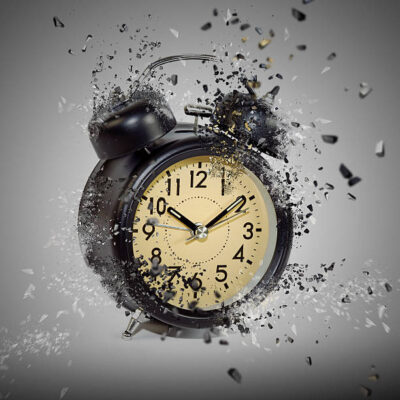 Carving out time for mindfulness often feels like an indulgence, but it’s necessary. And unlike everything else on your to-do list, there are simple ways to pause and reset—like the 4-7-8 breathing technique. A controlled breathing pattern intended to help the mind and body relax, the 4-7-8 technique has helped many transition from a stressful storm into a more focused, present self.
Carving out time for mindfulness often feels like an indulgence, but it’s necessary. And unlike everything else on your to-do list, there are simple ways to pause and reset—like the 4-7-8 breathing technique. A controlled breathing pattern intended to help the mind and body relax, the 4-7-8 technique has helped many transition from a stressful storm into a more focused, present self.
“Breath work is an active meditation that helps reframe the nervous system’s response to trauma and triggers,” says Jasmine Marie, founder and CEO of Black Girls Breathing. “Decreasing anxiety and stress and regulating the nervous system’s response to anxiety and stress are some of the many benefits experienced by those who incorporate the practice into their daily and weekly routines.”
The benefits of deep breathing are plentiful. Research has found that slow, conscious breathing exercises, like the 4-7-8 technique, are linked to mental function, in that they can enhance emotional control and psychological well-being.
So what is 4-7-8 breathing?
The 4-7-8 breathing method, also referred to as “relaxing breath,” is based on principles of pranayama, the ancient yogic ritual of directing energy through control of the breath. While breathing techniques of this nature have been developed over centuries, the technique known as 4-7-8 breathing specifically is credited to American doctor Andrew Weil, who had a particular focus on alternative medicine. The simple technique involves breathing in for four seconds, holding the breath for seven seconds, and then breathing out for eight seconds.
“The 4-7-8 breathing method is a well-known and widely practiced technique that involves breath regulation,” explains Caroline Leaf, Ph.D., cognitive neuroscientist and host of Cleaning Up the Mental Mess podcast. “With the 4-7-8 method you are controlling the duration of your breathing, how long you hold or release your breath, as well as the frequency of your exhales and inhales, which can help calm many neurophysiological reactions in the brain and body.”
It’s in this sense that breathing exercises for anxiety are often used as a tool. Many practitioners find belly breathing and lung exercises have a relaxing, centering effect; others use deep breathing to help them fall asleep. Those who find themselves waking up with anxiety may try 4-7-8 breathing to see how it might help reframe their morning, but more on that later.
First, how to perform the 4-7-8 breathing technique
As we mentioned earlier, the exercise is straightforward: Breathe in for four, hold for seven, and then release for eight.
But there are ways to get the most out of it. Thimela Garcia, author, yoga teacher, and certified holistic practitioner, suggests finding the right time and place as a start. “I usually choose a suitable time during the day and place where to perform this breathing technique,” says Garcia. “I practice at nighttime before I go to bed as this is a very relaxing breathing technique.”
Choose whatever and whenever works best for you, though Garcia warns there are some exceptions: “4-7-8 breathing can be practiced at any time and anywhere except while driving or while executing a task that requires full attention.”
Also helpful: Get low and comfortable. The technique can be done while standing up, but experts say it helps to be as physically relaxed as possible. “I find a comfortable sitting position, whether on my bed or the floor sitting on a cushion,” says Garcia. “I like to rest my palms facing up over my knees or clasped hands over my lap. This breathing technique can be performed with the eyes either open or closed.”
You might not always be in an environment where you can close your eyes, but Garcia recommends choosing a time and place whenever possible because it helps block out any potentially distracting visual stimuli and allows one to immerse deeper into the exercise.
Once situated in the right environment, there’s one last thing someone can do to prepare. “Take a few conscious breaths and fully empty the lungs before beginning 4-7-8 breathing,” says Garcia. “Despite it being a very simple exercise, it has a very specific way to be executed.” After that, it’s time for the main event. “Inhale through the nose for a count of four, hold the breath for seven, and then exhale forcefully for a count of eight through a pursed lip, making the whooshing sound and keeping the tip of the tongue on the tissue behind the top front teeth.”
What you do afterward is totally up to you. Garcia prefers to do a few cycles of 4-7-8 breathing and then simply remain still and relaxed. “Once I finish, I breathe normally and stay there for a couple of minutes simply enjoying the stillness and total relaxation I feel after performing this breathing technique,” says Garcia. “Slowly I start opening my eyes.”
Garcia notes that people new to the technique might feel a little lightheaded at first, so it helps to remember that it takes practice and knowing one’s limits. “Please be aware that this technique should only be performed up to four times at one time and for at least one month before attempting to increase the number of cycles,” says Garcia.
And there are ways to modify the practice to fit an individual’s preference. According to Dr. Leaf, our minds are constantly in action. So when she performs the 4-7-8 breathing technique, she likes to add three words to incorporate deliberate and conscious mind-in-action thinking: “When our mind is chaotic and unruly, the 4-7-8 breathing can help calm down our neurophysiology and neurochemistry,” she explains. “Adding the words, ‘think, feel, choose’ when I do this breathing technique highlights what my mind-in-action is doing while I am processing what is going on in the moment, and it can help me intentionally start to control the chaotic thinking, feeling, and choosing that has been triggered and is causing stress.”
Does the 4-7-8 breathing method really help someone fall asleep faster?
For those who feel like they jump into bed only to spend the next two to three hours entertaining every thought that flies into their head, don’t worry: You are not alone. These types of everyday anxieties are normal. But if you’re wondering how to fall asleep fast, experts say this breathing exercise can help.
“The breath work pattern used in the 4-7-8 technique can be a great practice coupled with a bedtime routine to decrease the stressors of the day and its impact on the body and mind, which can allow for a deeper, more uninterrupted sleep,” says Marie.
Just remember, it’s all a process, so it might involve patience and regular practice before it works. “This technique should be performed twice a day to see great results and to cultivate a regular practice that can be more useful as a prevention tool,” says Garcia. “I have practiced the 4-7-8 technique when I have woken up in the middle of the night and within minutes I have felt calmer and ready to go back to sleep.”
While there are many supposed hacks to falling asleep, the bedtime benefits of deep breathing are rooted in physiology, specifically how the brain responds to increased oxygen levels. “The combination of saying ‘think, feel, choose’ and breathing deeply results in increased oxygen in the frontotemporal lobe, which can lead to increased connectivity between the amygdala and frontal lobe,” explains Dr. Leaf. “This connectivity brings a balance of energy into the left and right sides of the brain, which can help calm anxiety and help to improve the sleep cycle by facilitating the release of melatonin and making it easier to enter into a state of relaxation.”
What are other deep breathing benefits?
As we’ve mentioned, 4-7-8 breathing is often cited as a way to help reduce anxiety. According to Dr. Leaf, people are often dysregulated when they encounter stressful or triggering stimuli, and the body can often occupy one of three states: fight, freeze, or flight mode. “There are many experiences that can lead to this heightened state, including trauma, a traumatic brain injury, or any mental health stressors,” she says. “When we feel distressed, we often can’t think clearly until we calm down our brains and bodies, which is what makes deep breathing so great—it can have a very soothing effect on the mind, brain, and body, which in turn can help us get into a mental state where we can get to the root of our stressors.”
Deep breathing can also be a way to increase feel-good hormones, a.k.a. endorphins. “When we pause our breathing and hold it in, we are filling our cells with oxygen,” says Dr. Leaf. “As we force the air out, we force oxygen into our brains. This increases the amount of oxygen that flows throughout our bodies in our blood. This oxygen goes to the heart and lungs and increases the number of endorphins in the brain.”
While the method is used by many as a way to prepare mentally for a stressful event or to prevent the onset of anxiety, the experts say it can also be helpful during a panic attack. “4-7-8 breathing allows people to feel in control of their breath,” says Garcia. “This technique can be performed during an anxiety episode and hyperventilation. Long and deep exhalations trigger the vagus nerve and calm the mind and body almost immediately.”
Another benefit of this approach to mindfulness is that it is simple, subtle—and free. It can be performed while passing time in a busy airport or at a work desk in between meetings. And it doesn’t require a yoga mat or a slew of meditation apps. Plus, it’s easy to remember: 4-7-8. The simple counted approach provides structure to the exercise, so one can properly focus on their breathing.
However, this approach might not work for everyone, as all our bodies and limits are different. “I personally do not teach any techniques that are based on counting,” says Marie, “as everyone has a different lung capacity and the focus on being able to hold or expand the breath for a certain amount of time most times makes the participants be in their head more than their body and trusting their body for the duration of the practice.”
Original article here


 If you’ve ever tried to meditate and found yourself growing restless or struggling to clear your mind, you’re not alone. “It’s the nature of the mind to have this ongoing conversation in the background,” says mindfulness practitioner and author, Joy Rains.
If you’ve ever tried to meditate and found yourself growing restless or struggling to clear your mind, you’re not alone. “It’s the nature of the mind to have this ongoing conversation in the background,” says mindfulness practitioner and author, Joy Rains. From murmurations to sunrises, the world around us is breathtaking. We all know what it’s like to be captivated by nature, but did you know that encountering awe is an established element of mindfulness practice?
From murmurations to sunrises, the world around us is breathtaking. We all know what it’s like to be captivated by nature, but did you know that encountering awe is an established element of mindfulness practice? Although we may need a break from our thoughts and emotions from time to time, there are also moments when it’s important to both acknowledge and reflect on them. Suzy says: “Meditation can be reflective writing, sitting with our feelings.”
Although we may need a break from our thoughts and emotions from time to time, there are also moments when it’s important to both acknowledge and reflect on them. Suzy says: “Meditation can be reflective writing, sitting with our feelings.” The good life is the simple life. Among philosophical ideas about how we should live, this one is a hardy perennial; from Socrates to Thoreau, from the Buddha to Wendell Berry, thinkers have been peddling it for more than two millennia. And it still has plenty of adherents. Magazines such as Real Simple call out to us from the supermarket checkout; Oprah Winfrey regularly interviews fans of simple living such as Jack Kornfield, a teacher of Buddhist mindfulness; the Slow Movement, which advocates a return to pre-industrial basics, attracts followers across continents.
The good life is the simple life. Among philosophical ideas about how we should live, this one is a hardy perennial; from Socrates to Thoreau, from the Buddha to Wendell Berry, thinkers have been peddling it for more than two millennia. And it still has plenty of adherents. Magazines such as Real Simple call out to us from the supermarket checkout; Oprah Winfrey regularly interviews fans of simple living such as Jack Kornfield, a teacher of Buddhist mindfulness; the Slow Movement, which advocates a return to pre-industrial basics, attracts followers across continents. Somewhat paradoxically, then, the case for living simply was most persuasive when most people had little choice but to live that way. The traditional arguments for simple living in effect rationalise a necessity. But the same arguments have less purchase when the life of frugal simplicity is a choice, one way of living among many. Then the philosophy of frugality becomes a hard sell.
Somewhat paradoxically, then, the case for living simply was most persuasive when most people had little choice but to live that way. The traditional arguments for simple living in effect rationalise a necessity. But the same arguments have less purchase when the life of frugal simplicity is a choice, one way of living among many. Then the philosophy of frugality becomes a hard sell. Our brain is always active and it is certainly a good idea to nourish it. We can maximise its potential with simple practices.
Our brain is always active and it is certainly a good idea to nourish it. We can maximise its potential with simple practices.
 Understand how you are spending it and what you are spending it on. This is a key practice during this season of closure, reflection and renewal. You give your power to certain energies both by focusing on them, or trying to ignore them. Both are a form of energy currency. The answer is awareness. Be aware, and set your intentions.
Understand how you are spending it and what you are spending it on. This is a key practice during this season of closure, reflection and renewal. You give your power to certain energies both by focusing on them, or trying to ignore them. Both are a form of energy currency. The answer is awareness. Be aware, and set your intentions.
